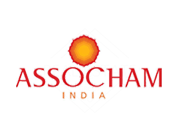Adman, B. (2011). Effect of packaging materials and storage time of cutting material to rooting percentage of Shorea Johorensis and S. Smithiana cuttings. J. Plant. For. Res. 8: 97-109.
Cahyani, K. I., Sudana, I. M. and Wijana, G. (2021). The effect of Trichoderma spp. on growth, yield, and presence of the disease in peanut (Arachis hypogaea L.) plants. J. Agric. Sci. 11: doi:10.24843/AJOAS.2021.V11.I01.P05.
Doo, S. R. P., Meitiniarti, V. I., Kasmiyati, S. and Kristiani, E. B. E. (2023). Trichoderma spp., The multi-functional fungus. Trop. Microbine 1: 7-89.
Matondang, C. O., Muklasin and Soesanto, L. (2023). Potency of secondary metabolite crude extracts produced 90by Trichoderma asperellum and Pseudomonas fluorescens for Anthracnose control in cocoa pod. Menara Perkebunan 91: 87-95. doi:10.22302 /iribb.jur.mp.v91i1.524.
Maxiselly, Y., Sari, R. A. and Ariyanti, M. (2020). Stimulasi pertumbuhan kina belum menghasilkan (TBM) dengan aplikasi konsentrasi bap setelah fase pembentukan batang. Paspalum J. Il. Pert 8: 78-84.
Nurita, F. D. and Yuliani, Y. 2023. Pengaruh kombinasi auksin dan giberelin terhadap pertumbuhan dan partenokarpi pada tanaman terung (solanum melongena var. gelatik). lenterabio: Berkala Ilmiah Biologi 12: 457-65
Pamekas, T. (2020). Growth responses of pathogenic fungus Fusarium Oxysporum to secondary metabolites of antagonistic Trichoderma sp. Pendipa J. Sci. Edu. 4: 75-81.
Rahardjo, P. (2012). Panduan Budidaya dan Pengolahan Kopi Arabika dan Robusta, Jakarta: Penebar Swadaya Press, Indonesia.
Rahmadanty, N. H., Darmayasa, I. B. G. and Parwanayoni, N. M. S. (2021). Potency of Trichoderma asperellum TKD filtrate in inhibiting Aspergillus parasiticus contamination in peanut seeds (Arachis hypogaea L.). SIMBIOSIS 9: 25-28.
Rizal, S. and Susanti, T. D. (2018). Peranan jamur trichoderma sp. yang diberikan terhadap pertumbuhan tanaman kedelai (Glycine max L.). Sainmatika: Jurnal Ilmiah Matematika dan Ilmu Pengetahuan Alam 15: 23-29.
Rusmana (2019). Shoot and root ratio of melon plants (Cucumis melo L.) in different growing media and water availability. J. Agroecotechnol. 9: 137-42.
Saputro, A. S. (2023). Kajian Trichoderma dan bakteri fotosintetik sebagai penunjang budidaya padi organik. Agrisaintifika: J. I.I. Pert 7: 218-27.
Sari, W. K. (2013). Respon bibit kakao (Theobroma cacao L.) asal somatic embryogenesis terhadap komposisi media tanam yang berbeda. J. Agric. dan P. Wil. 5: 14-27.
Soesanto, L., Mugiastuti, E. and Manan, A. (2019). Raw secondary metabolites application of two Trichoderma harzianum isolates towards vascular streak dieback on cocoa seedlings. Pelita Perkebunan 35: 22-32.
Sofian, K., Syah, R. F. and Hastuti, P. B. (2022). Aplikasi trichoderma dan mikoriza: meningkatkan pertumbuhan bibit kelapa sawit di pre nursery. Agroista: Jurnal Agroteknologi 6: 1-10.
Vinale, F., Sivasithamparam, K., Ghisalberti, E. L., Ruocco, M., Woo, S. and Lorito, M. (2012). Trichoderma secondary metabolites that affect plant metabolism. Natural Product Commu. 7: 1545-50.
Wachid, A. and Fitrianisyah, L. (2021). The effect of various Trichoderma sp. isolate as trichocompost fertilizer in tomato (Lycopersicum esculentum Mill.) growth and yield. Nabatia 9: 53-64.
Yao, X., Guo, H., Zhang, K., Zhao, M., Ruan, J. and Chen, J. (2023). Trichoderma and its role in biological control of plant fungal and nematode disease. Front. Microbiol. 14: 1-15.
Cahyani, K. I., Sudana, I. M. and Wijana, G. (2021). The effect of Trichoderma spp. on growth, yield, and presence of the disease in peanut (Arachis hypogaea L.) plants. J. Agric. Sci. 11: doi:10.24843/AJOAS.2021.V11.I01.P05.
Doo, S. R. P., Meitiniarti, V. I., Kasmiyati, S. and Kristiani, E. B. E. (2023). Trichoderma spp., The multi-functional fungus. Trop. Microbine 1: 7-89.
Matondang, C. O., Muklasin and Soesanto, L. (2023). Potency of secondary metabolite crude extracts produced 90by Trichoderma asperellum and Pseudomonas fluorescens for Anthracnose control in cocoa pod. Menara Perkebunan 91: 87-95. doi:10.22302 /iribb.jur.mp.v91i1.524.
Maxiselly, Y., Sari, R. A. and Ariyanti, M. (2020). Stimulasi pertumbuhan kina belum menghasilkan (TBM) dengan aplikasi konsentrasi bap setelah fase pembentukan batang. Paspalum J. Il. Pert 8: 78-84.
Nurita, F. D. and Yuliani, Y. 2023. Pengaruh kombinasi auksin dan giberelin terhadap pertumbuhan dan partenokarpi pada tanaman terung (solanum melongena var. gelatik). lenterabio: Berkala Ilmiah Biologi 12: 457-65
Pamekas, T. (2020). Growth responses of pathogenic fungus Fusarium Oxysporum to secondary metabolites of antagonistic Trichoderma sp. Pendipa J. Sci. Edu. 4: 75-81.
Rahardjo, P. (2012). Panduan Budidaya dan Pengolahan Kopi Arabika dan Robusta, Jakarta: Penebar Swadaya Press, Indonesia.
Rahmadanty, N. H., Darmayasa, I. B. G. and Parwanayoni, N. M. S. (2021). Potency of Trichoderma asperellum TKD filtrate in inhibiting Aspergillus parasiticus contamination in peanut seeds (Arachis hypogaea L.). SIMBIOSIS 9: 25-28.
Rizal, S. and Susanti, T. D. (2018). Peranan jamur trichoderma sp. yang diberikan terhadap pertumbuhan tanaman kedelai (Glycine max L.). Sainmatika: Jurnal Ilmiah Matematika dan Ilmu Pengetahuan Alam 15: 23-29.
Rusmana (2019). Shoot and root ratio of melon plants (Cucumis melo L.) in different growing media and water availability. J. Agroecotechnol. 9: 137-42.
Saputro, A. S. (2023). Kajian Trichoderma dan bakteri fotosintetik sebagai penunjang budidaya padi organik. Agrisaintifika: J. I.I. Pert 7: 218-27.
Sari, W. K. (2013). Respon bibit kakao (Theobroma cacao L.) asal somatic embryogenesis terhadap komposisi media tanam yang berbeda. J. Agric. dan P. Wil. 5: 14-27.
Soesanto, L., Mugiastuti, E. and Manan, A. (2019). Raw secondary metabolites application of two Trichoderma harzianum isolates towards vascular streak dieback on cocoa seedlings. Pelita Perkebunan 35: 22-32.
Sofian, K., Syah, R. F. and Hastuti, P. B. (2022). Aplikasi trichoderma dan mikoriza: meningkatkan pertumbuhan bibit kelapa sawit di pre nursery. Agroista: Jurnal Agroteknologi 6: 1-10.
Vinale, F., Sivasithamparam, K., Ghisalberti, E. L., Ruocco, M., Woo, S. and Lorito, M. (2012). Trichoderma secondary metabolites that affect plant metabolism. Natural Product Commu. 7: 1545-50.
Wachid, A. and Fitrianisyah, L. (2021). The effect of various Trichoderma sp. isolate as trichocompost fertilizer in tomato (Lycopersicum esculentum Mill.) growth and yield. Nabatia 9: 53-64.
Yao, X., Guo, H., Zhang, K., Zhao, M., Ruan, J. and Chen, J. (2023). Trichoderma and its role in biological control of plant fungal and nematode disease. Front. Microbiol. 14: 1-15.










